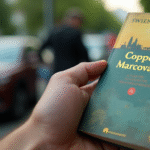Introduction
The concept of a “Pyrrhic victory” refers to triumphs so costly that they ultimately result in defeat. This scenario unfolded in Mexico’s judicial reform, where Claudia Sheinbaum, the capital’s head, accepted to proceed with a flawed election process despite its inherent issues.
The Flawed Reform
The reform originated from the personal vendetta of an ignorant and authoritarian president against an independent judicial power. The structure was hastily designed, disregarding expert observations on its problems. The primary objective was to control the judicial branch, but even this goal was executed poorly.
Inefficient Implementation
- Failure to adhere to the established timelines for selection processes
- Questionable candidates due to flawed selection procedures
- Ineffective and misleading campaigns with uninformed candidates
- Cumbersome and absurd voting methods, with no democratic procedure followed correctly
Institutional Shortcomings
Electoral institutions displayed slowness and permissiveness. For instance, banning campaign materials three days before the election proved ineffective as the damage had already been done. The newspaper Reforma reported that the government of Clara Brugada paid individuals to mobilize voters for three months at eight hundred pesos per month. The INE seemed unconcerned.
Political Maneuvering
A meeting between President Sheinbaum and close Morena governors, held on May 26, was ostensibly about IMSS-Bienestar matters. However, it likely served to provide voting instructions and demand voter turnout quotas just a week before the June 1 election.
Evaluating the Election
To assess the election’s success, consider these five aspects:
- Voter turnout
- Electoral day development
- INE’s performance during and after the elections
- Interference from various actors (governments, parties, organized crime, unions, etc.)
- Election outcomes
Voter Participation
Morena representatives, including Sergio Gutiérrez Luna, predicted a 15-20% voter turnout. This translates to 20 million votes out of a 100-million eligible population. Should this prediction hold, the ruling party would face another failure in the already-troubled judicial election.
Voting Threshold
Any voter turnout below 30 million—supposedly the hardcore support base—would be disastrous. This target is relatively easy for an organization that secured a landslide victory in 2024, having invested heavily in propaganda and mobilization efforts.
Potential Election Day Issues
Be vigilant about election day developments, as old bad habits might resurface with more potent forms of voter coercion, theft, or ballot stuffing. Group conflicts within MORENA or criminal organization presence could also disrupt the process. The INE would then face a dilemma: either ignore irregularities or denounce and cancel affected polling stations.
Other Actors’ Interference
Keep an eye on other actors’ actions, as internal MORENA disputes escalate and alliances with criminal organizations could worsen the situation. Hopefully, none of these events will transpire.
Post-Election Scenario
Assuming a peaceful election day and a transparent vote count, the federal government will encounter a judiciary with numerous heads and masters (governors, local power brokers, criminal organizations), each with distinct interests.
Consequences of the Reform
Mexico will transition from a slow, corrupt judiciary to an inexperienced, easily corruptible one. The reform’s consequences will be detrimental for both the ruling party and the nation.






